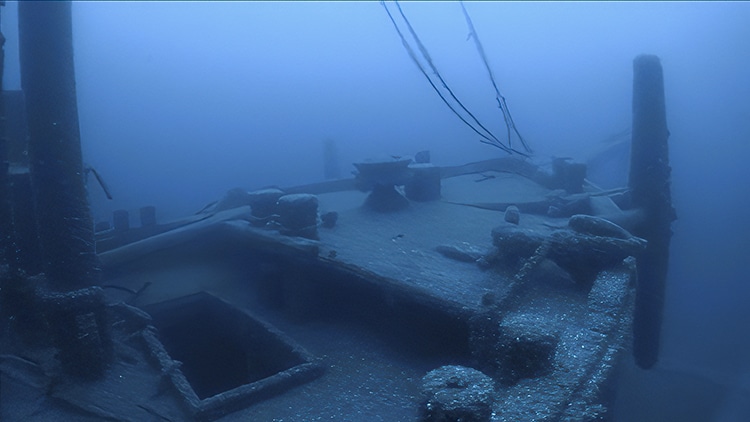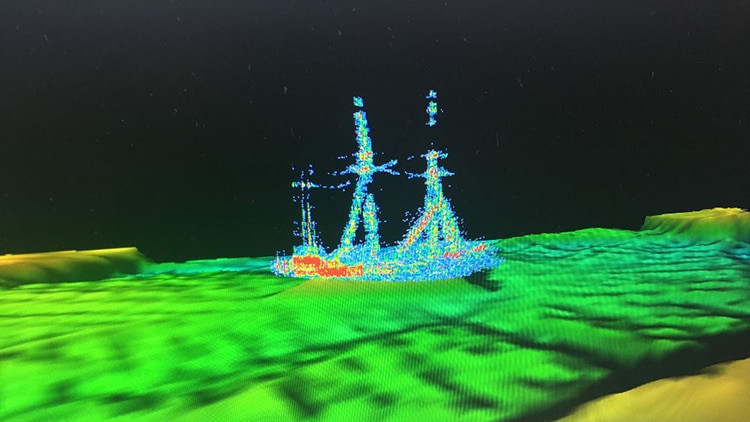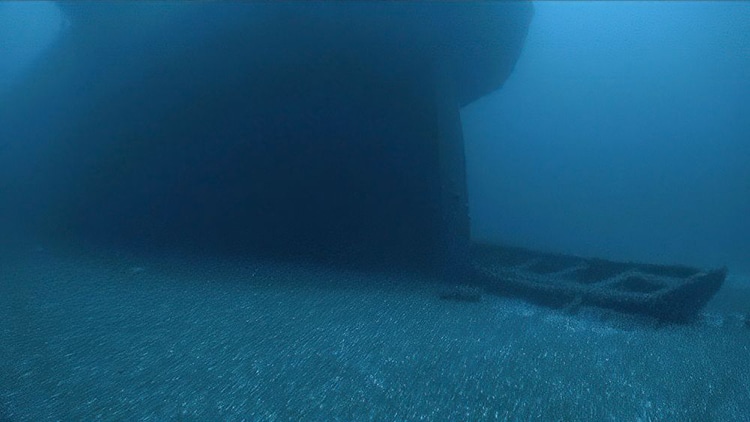
The bow preserved by cold waters at the bottom of Lake Huron. (Photo: NOAA/ Undersea Vehicles Program UNCW)
Early in the morning on September 26, 1894, the crew of the 191-foot Ironton—a schooner barge—was in a panic. Cut loose from the steamer that had been hauling the boat and its crew through the frigid waters of Lake Huron, the Ironton was out of control. Buoyed by the wind as the crew failed to set the sails properly in the gale, the ship swung off course and collided with another steamer named Ohio. Both ships went down in the resulting collision, adding more vessels to the perilous region known as “Shipwreck Alley.” There the wreck lay in wait until the news of its recent discovery, in shockingly good condition, was announced.
The Great Lakes are a sight to behold, often surprising for most people who are not familiar with their large waves and vast open waters. The lakes were critical to shipping goods domestically and internationally in the 19th century. Unfortunately, the sheer number of ships traversing certain routes meant a ship out of control could careen into others as the Ironton did. The impact with Ohio punctured the Ironton‘s bow. It began to take on water like the Titanic. Unfortunately, the crew was not able to detach the lifeboat. While two members were able to cling to floating debris once in the water, the captain and four other crew perished. All of Ohio‘s seamen made it safely back to land.
After the sinking, the exact location of the wreck was lost to time. In 2017, research teams encountered Ohio, suggesting its doomed fellow may be nearby. In 2019, efforts of the Ocean Exploration Trust (which found Titanic) and the Thunder Bay National Marine Sanctuary turned up the Ironton at last. The team has since released images of the wreck—whose location has been secret for the last few years—almost perfectly preserved by the very cold waters of the deep lake. Investigating through sonar and remotely operated vehicle (ROV), the team discovered its three masts still standing upright with rigging attached to the spars. Even the lifeboat is still connected, hanging by a sad stretch of rope to the ship itself.
In the future, the location of the wreck will be marked by a buoy so that divers can safely visit the wreck, along with the many others in the region. Researchers hope to learn more about the Great Lakes themselves and the role they played in historical commerce.
The Ironton is a special find for historians. “It is hard to call it a shipwreck,” Jeff Gray, superintendent of the marine sanctuary, told The New York Times. “It’s a ship, sitting on the bottom, fully intact, and the lifeboat there, literally, is a moment frozen in time.”
Discovered recently within NOAA's Thunder Bay National Marine Sanctuary in Lake Huron, the ghostly wreck of the nineteenth-century ship Ironton is shockingly well-preserved.

Radar image of the schooner-barge Ironton. (Photo: Ocean Exploration Trust/NOAA)
The schooner sank in September 1894 after colliding with a steamer. Five of the Ironton crew died in the tragedy.

The lifeboat, still attached to the ill-fated vessel. (Photo: NOAA/Undersea Vehicles Program UNCW)
h/t: [Smithsonian Magazine]
Related Articles:
Art History: Ancient Practice of Textile Art and How It Continues to Reinvent Itself
Sister Duo Weaves Textured Wall Hangings Inspired by Australian Landscapes
How to Crochet: Learn the Basics of This Time Honored Handicraft
Artist Fills Forest with Life-Size Sculptures Made from Woven Rods of Willow






















































































